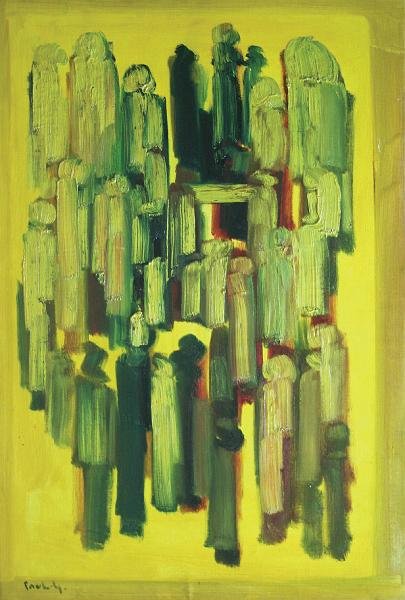ItaliaArabia
ItaliaArabia
Curated by Sam Bardaouil and Till Fellrath
December 10, 2008 – February 7, 2009
Opening reception: Tuesday, December 9, 2008, 7 to 9 pm

The Chelsea Art Museum – Home of the Miotte Foundation – is pleased to present ItaliaArabia. In a time when East and West seem to be whirled into a state of polarized ideologies, it is good to be reminded that no culture exists in isolation from another. The various art forms along with the geo-cultural climates that fostered them have always influenced each other through trade, cultural patronage, technological advancement, diplomatic relations and sometimes even military campaigns. The long-standing convergences between Italy and the Middle East constitute a perfect example of such a proximity leading to the birth of new trends in art theory and practice.
ItaliaArabia juxtaposes 80 works by mid 20th century Italian painters with paintings by Lebanese, Egyptian, Syrian and Iranian artists revealing the co-impact that one culture has had on the other. Comparing works by Syria’s Fateh Moudarress to others by his teacher Massimo Campigli reveals the Middle Eastern appropriation of 20th century Italian styles. Both artists, in this case, were deriving inspiration from the fertility goddesses of ancient mythology. In addition to the modern art section, a collection of a hundred
additional manuscripts, textiles, musical instruments and cartographic documents create a historical frame of reference spanning an entire millennium of Italian, Ottoman, Safavid and Qajar convergences. The influence of the Baroque master Guido Reni on the work of Muhammad Zaman, a 17th century Safavid court painter who spent time in Rome learning about Italian Art, is one of several exchanges illustrated in this section.
Between the years 1940 and 1965, several artists from the Arab-Persian world could be found studying at the fine art academies of Rome, Milan, Venice, and Florence. In this post Second World War period much of European art was moving towards the reinvention of a less sentimental Classical tradition, expressing aesthetic, liturgical and political concerns. Those “student-artists” were to eventually become some of the
leading masters back in their home countries and introduce 20th century Italian influences to the modern and contemporary art of the Middle East.
Chelsea Art Museum
www.chelseaartmuseum.org